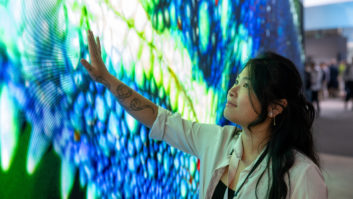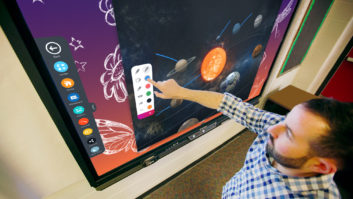As 2020 got underway there was every indication that it was going to be a milestone year for stadiums worldwide. On the sporting front, the calendar promised huge venue-filling events such as the Tokyo Olympics and EURO 2020, while in the US the continued buoyant health of college sports was enabling a flurry of new-builds or refurbishments. Meanwhile, on the music and entertainment side, the suspicion that many of the most successful heritage acts might finally be nearing the end of the road could be deduced by the large number of international tours on the books.
Then the pandemic struck and, in a matter of weeks, the events calendar suddenly looked very different. Lockdowns began and many planned installation projects were also put on hold. “Pretty much all prospects halted, or at best were delayed,” recalls James King, director of marketing, Martin Audio. “With such uncertainty about changing conditions and operating circumstances, it became clear that large scale projects were simply not feasible.”
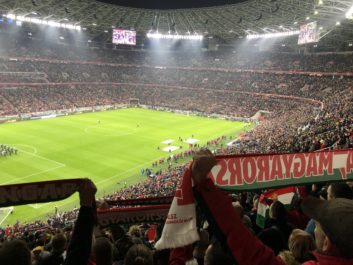 As time has gone by and there has been more clarity around on-site work that can take place, some stadium projects have resumed – more so in some countries than others. In early 2021 as vaccine rollout began, there were some moves to draw up schedules for spring/summer; this proved to be overly optimistic as further waves of the virus led to many events being rolled over to later this year or 2022.
As time has gone by and there has been more clarity around on-site work that can take place, some stadium projects have resumed – more so in some countries than others. In early 2021 as vaccine rollout began, there were some moves to draw up schedules for spring/summer; this proved to be overly optimistic as further waves of the virus led to many events being rolled over to later this year or 2022.
However, the outlook for sports is now looking considerably brighter, with the delayed Euro 2020 tournament having been a resounding success, with huge crowds at some venues, and the Olympics brightening the sports calendar in late July and early August, ahead of the return of English Premier League football and the pull of Kane, Grealish, et al as we head into autumn and the return of music gigs.
But if the management of fans inside stadiums is going to remain a source of concern for the foreseeable future, it seems there is cause for optimism in other departments. In fact, interest in new AV solutions has returned over the last 3-4 months to a degree that has taken many by surprise. As Dan Palmer, L-Acoustics business development manager for sports facilities, remarks: “We have been very pleasantly surprised to see how fast things are ramping up in terms of projects going forward again. Q2 we think will be off the charts regarding demand for our products.” Sports might be the main driver at present, but music events are also returning, so all in all “a post-pandemic renaissance is quite likely,” he suggests.
SALES CAVEAT
There is a caveat to be added here in that some parts of the sector are expecting a surge in sales on the basis that the 1 to 2 year period preceding the pandemic had not been especially busy for stadium installs. Meanwhile, In Europe, a cycle of upgrades that had begun during the mid 2000s had largely been completed – although there were tentative signs that demand was about to climb again.
The kind of view expressed by King is not uncommon. “Prior to the pandemic we were starting to see more prospects of stadia and being invited to pitch for more projects,” he says. “This was an encouraging sign, largely driven [in our case] by the success of weatherised and standard CDD [loudspeakers] for smaller outdoor and indoor stadia, and the interest in our Wavefront Precision optimised line array series for larger projects. Projected stadium revenue at that stage was a much smaller part of our overall planning, and due to the long-term nature of these projects (anywhere between 12 and 36 months) it’s always seen as an outlier and bonus – but a very nice bonus all the same.”
With clarity regarding Covid regulations improving over time, a good portion of previously in-progress installations were able to continue. Notes Palmer: “So if [a venue had] already assigned a budget to a project, it was likely that they would take advantage of the downtime. If a shovel was in the ground those projects tended to move forward with all [Covid safety] protocols in place.”
Demand for new visual and display technologies appears to have been consistently good pre-pandemic, driven by the benefits of energy-efficient technology and higher resolution pixel pitches. Rob Bint, director of LED display company VOD-Visual, can attest to that: “We had been extremely busy fulfilling orders in the run-up to the pandemic, but then it did go very quiet. But as of a few months ago, we have seen a [return of demand] as more people decided that they would go ahead with new projects – not least because it’s easier to get the work done when there are hardly any people there! So the stock is now beginning to go out of the door again, with our smaller pitch perimeter LED products in greatest demand.”
RESURGENCE RATE
The view that the market began to pick up again this spring is echoed – to a greater or lesser extent – by other interviewees. Nonetheless, there is an acknowledgement that stadiums will remain somewhat volatile as a market for the foreseeable future, and that where projects are green-lit there is a chance that they will be smaller in scope and/or more cost-focused than might otherwise have been the case.
Matt Wilson, director of marketing at US-based AV systems designer and integrator McCann Systems, is among the most upbeat. “The sector is fine,” he asserts. “Fans are eager to get back, and arenas are waiting to welcome them back to clean, safe, fun experiences. The technology is continually improving and fans want to play along, so you’ll see more entertainment multi-use spaces built into stadiums.”
For VOD-Visual, Bint notes that the US market has come back more quickly than some other territories, but now another consequence of the pandemic is being felt – namely the global chip shortage that most experts predict will last into mid-2022. “It’s having a huge impact on the industry,” he confirms. “Some suppliers are not even taking orders until next year and cannot tell you when they think there will be availability again. So that is going to slow down a lot of people.”
Whilst he does not observe any real impact on major new venue projects with established timescales, d&b audiotechnik director Stephen Hogg indicates that there is reason to expect a slowdown in refurbishments: “Loudspeaker upgrade programmes may be postponed until the effects of Covid and government guidance on capacities and the return of consistent revenue streams becomes clearer. There is also some indication that venue owners and operators are reconsidering the future experience they will need to provide to their communities, as well as identifying additional opportunities for developing revenue.”
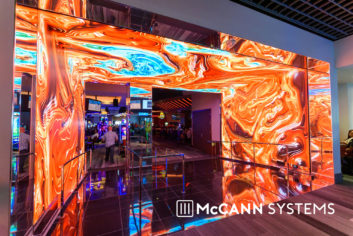 For UK-based AV sales and installation company RG Jones, communications director Sarah Gellas observes: “I think there are about the same number of opportunities as there have always been. Some projects have been cancelled or delayed, but others have been given grants or taken the time to re-evaluate their business and have identified new AV requirements to meet their new demands.”
For UK-based AV sales and installation company RG Jones, communications director Sarah Gellas observes: “I think there are about the same number of opportunities as there have always been. Some projects have been cancelled or delayed, but others have been given grants or taken the time to re-evaluate their business and have identified new AV requirements to meet their new demands.”
It is left to King at Martin Audio to voice the strongest note of caution. “There is still significant unease about investing in new stadium projects and infrastructure, including upgrades,” he says. “With such uncertainty regarding different localities and conditions, as well as how soon full capacity crowds can return to maximise any investment it is going to be a long road approach. Indeed, in our most recent survey asking our customers which applications would return quickest from the pandemic, stadium installs was considered the least likely of 15 applications offered. Therefore, our approach is a pragmatic one of engagement and support for stadium projects, but they provide more of a bonus revenue consideration rather than one we rely upon to sustain and grow the business.”
INFORMED FACTORS
Where work is going forward at present, it’s likely to be informed by at least a couple of newer factors. Quality of experience has always been a focus, but it’s going to have to be even more acute to lure some visitors – now used to spending the vast majority of their time indoors – back on-site. Similarly, the high-quality home technology that has helped so many of us get through the pandemic is likely to mean we have higher expectations of in-stadium AV.
One consequence of this is set to be further investment in various immersive audio and video technology. Notes King: “The emergence of 3D sound immersion has been a growing trend of the last five years, and something we took onboard in partnership with Astro Spatial for our Sound Adventures programme.” That said, it still tends to be more of a priority in traditional live event venues, such as theatres and concert halls, as opposed to stadiums “where the need for high quality coverage, clarity, and impact for crowd is still the primary factor.”
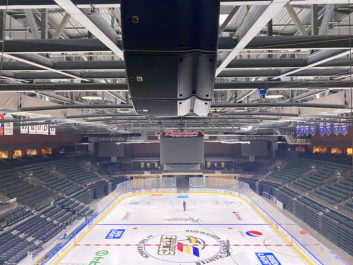 For L-Acoustics, Palmer also indicates the enduring nature of core audio requirements, such as consistent performance and robust construction. Hence the popularity of products like the A10 medium throw line source loudspeaker, whuich he describes as a “fantastic new product that an incredible ‘bang for the buck’.” Able to be flown or stacked in combinations to form vertical or horizontal line sources, or used individually as configurable directivity point sources, the product resonates with the need for loudspeakers to be “completely multifunctional” and easily adjusted to complement different event types.
For L-Acoustics, Palmer also indicates the enduring nature of core audio requirements, such as consistent performance and robust construction. Hence the popularity of products like the A10 medium throw line source loudspeaker, whuich he describes as a “fantastic new product that an incredible ‘bang for the buck’.” Able to be flown or stacked in combinations to form vertical or horizontal line sources, or used individually as configurable directivity point sources, the product resonates with the need for loudspeakers to be “completely multifunctional” and easily adjusted to complement different event types.
For d&b, Hogg agrees that there is a trend towards immersive experiences – specifically those “reflecting the allegiance of match day crowds”. But the long-standing focus of stadium customers on audio clarity and ease of use remains pivotal. “The trend towards high performance loudspeaker systems – easily managed, controlled and reconfigured to meet the demand for flexible solutions – continues.”
VERSATILE SYSTEMS
The expectation that new systems be versatile and supportive of use in both sports and music is echoed by Jack Drury, who heads market development – artist and entertainment relations at Shure UK. Prior to the pandemic, the microphone and personal monitoring company had just completed “a buyback programme for wireless microphone users whose systems were affected by the 5G auctions [of the 700 MHz band]. Meanwhile, we have seen a continuing rise in demand for our Axient Digital wireless systems, for which we have recently added a version of the Q5X PlayerMic bodypack transmitter for more comfortable usage. As well as the sound quality and performance of the Axient Digital products, the inclusion of Dante/AES67 ports makes it very suitable for [networked environments].”
Meanwhile, the push towards comprehensive networked environments is as prominent in stadium AV as any other sector. As King remarks: “It is certainly more popular nowadays to create a wholistic approach to networking within larger venues – be that stadiums or any other venue. This simply allows the integrators and support staff to better manage and control the AV systems and allow that control to take place remotely, which given the pandemic has been key and will be moving forward. All of our electronics that drive the systems best suited to installation in stadiums are network controllable, both from our own proprietary application VU-NET and third party controllers. We also benefit from networked audio, using Dante across our iKON amplifiers and DX4.0 processors, and allowing the integrator to send audio and control down the same network.”
Away from the actual stadium bowl, there are indications that stadium owners have also been using the lockdown to evaluate their other methods of making money. Providing conference facilities has been one common revenue stream in recent years, but changing working practices mean that demand here is likely to evolve once more.
HOSPITABLE SYSTEMS
Hospitality and VIP rooms, however, do seem to be the subject of a growing number of installs as 2021 progresses. “We have sold more systems into hospitality spaces lately,” confirms Bint, adding that “there is a desire [by some customers] to upgrade the quality of the technology available to hospitality clients.”
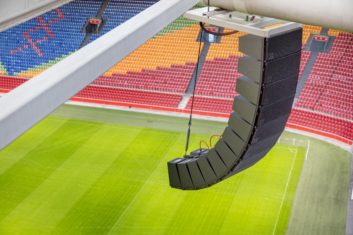 While conferencing has done good business for many stadiums in recent years, Shure UK systems group regional sales manager John Ellis forecasts a steady recalibration of requirements. “There has been a big change in the corporate market as a result of the pandemic, with more [conventional] conference rooms starting to be turned into full-on collaboration spaces,” he says.
While conferencing has done good business for many stadiums in recent years, Shure UK systems group regional sales manager John Ellis forecasts a steady recalibration of requirements. “There has been a big change in the corporate market as a result of the pandemic, with more [conventional] conference rooms starting to be turned into full-on collaboration spaces,” he says.
Consequently, there is a trend towards combining a few smaller rooms into a larger collaboration environment in which the AV technology is increasingly high-end, notes Ellis: “With collaboration spaces there is a demand for very high quality video, cameras and audio. From our perspective as a microphone manufacturer, this means a move away from handheld mics towards ceiling array microphones.” With the advantages of less equipment clutter and an increased ability to focus on the speaker rather than their microphone position, Shure’s products in this area include the Microflex Advance MXA910 ceiling array mic.
Market watchers should also expect a continued emphasis on engagement that spans everything from event-driven entertainment zones to the ability of sports fans, in particular, to view replays or additional content via stadium WiFi with minimal latency as an event is in progress. In short, getting fans in earlier and keeping them engaged for longer is critical, and bound to become even more so as venues strive to retain advertisers in a more challenging economy.
McCann’s Wilson remarks: “It’s easy to think of scoreboards and huge speakers when talking stadiums, but there are so many more technology touchpoints with fans, employees and even engaging people who aren’t inside the gates. None of these[venues] are offering less tech and they’ll continue to explore innovative AV ideas.”
Hence while “the arms race for bigger and better will continue, there will still be more smaller-scale audio-visual interactions with fans.” Examples might include digital signage and wayfinding infrastructure that enables a quicker and more seamless change of messaging, while Wilson alludes to recent projects that have involved suites turning into ‘fan caves’ and entrance spaces being equipped with LED tunnels.
SPORTING CALENDAR
Whilst the eventual resumption of a normal sporting calendar seems probable, there is more cause to question the outlook for live music in stadiums. The fact that so many venue-packing heritage acts were undertaking or contemplating final tours was troubling promoters before the pandemic. In the interim there has been a trend towards older acts selling their song catalogues to one of the new generation of music IP investment firms such as Hipgnosis Songs Fund – presumably concluding that one last big payday is hard to resist if touring is going to be unpredictable for some time. So now the issue is whether some of the largest older acts are genuinely ‘done’ – and whether there are enough younger performers who are capable of filling 50,000-plus seats every time.
Whilst acknowledging that we “will see a shift” in the kinds of acts visiting stadiums, Drury is optimistic that the sector will remain very viable for music events. “I think that music is so ingrained in who we are as a species that the live music industry can never ‘fail’ as such,” he says. “However, the artists playing large venues are changing and that has implications for the audio. More and more it’s not a big rock & roll sound, but quite whispered vocals in which there is likely to be a lot of crowd noise going through the microphones. Billie Eilish would be a good example! So that does require thought in terms of microphone structure, directionality, rejection and so on.”
No doubt that transition will be accomplished in time. Indeed, despite the present challenges, there is a feeling of returning enthusiasm about how the stadium AV sector might develop over the next few years. As Palmer concludes: “Let the renaissance begin. I cannot wait to see how this all comes together and welcome the challenge to support it.”
Check out our live events special edition here.






